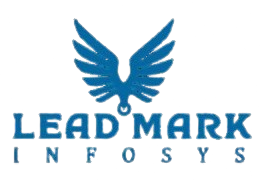Figma to WordPress
As the demand for seamless digital experiences grows, more designers and developers are moving from static designs to dynamic, scalable websites. A common scenario? Taking beautiful, interactive designs from Figma to WordPress.
This process transforms visually polished design files into fully functional WordPress websites. Whether you're a freelance designer, part of a creative agency, or running a business website, converting Figma designs to WordPress gives you complete control, excellent performance, and scalable CMS features.
In this blog, we’ll guide you through how to convert Figma to WordPress, explore the different methods available, highlight tools and plugins you can use, and offer expert tips to help you achieve pixel-perfect Figma to WordPress conversions.
Why Convert Figma Designs to WordPress?
Figma is loved for its real-time collaboration and intuitive design interface. But when it’s time to go live, you need more than visuals—you need performance, SEO, and content control.
Here’s why converting Figma to WordPress is a smart move:
- Pixel-perfect implementation: Replicate your exact design with precision.
- Responsive design: Make your site mobile and tablet-friendly.
- SEO control: WordPress offers excellent optimization options.
- CMS functionality: Manage content easily through WordPress's backend.
By choosing to convert Figma design to WordPress, you bridge the gap between design and functionality, ensuring your brand looks as good in reality as it does in concept.
4 Effective Methods to Convert Figma to WordPress
There’s no one-size-fits-all approach to Figma to WordPress conversion. Depending on your goals, budget, and skill set, here are four tried-and-true methods:
- Using WordPress Page Builders
- Using Plugins like Uchumi or Yutaka
- Manual Coding (HTML/CSS to WordPress Theme)
- Hiring a Professional Conversion Service
Let’s break each one down.
Method 1: Using WordPress Page Builders (Elementor, Gutenberg, Divi)
Page builders are visual tools that let you drag and drop components, making it easy to recreate your Figma design in WordPress. Popular options include:
- Elementor: Best for beginners and advanced users alike.
- Gutenberg: WordPress’s default block editor.
- Divi: A premium theme and page builder in one.
Pros:
- No coding required
- Real-time visual editing
- Fast design-to-live process
Cons:
- May require third-party add-ons
- Can be bloated if not optimized
You can easily use Figma to WordPress Elementor, Gutenberg, or Divi integrations for rapid development.
Method 2: Using Plugins like Uchumi & Yutaka
Want automation? Plugins like Uchumi, Yutaka, and Anima are your friends. These tools allow you to export Figma to WordPress directly or via intermediate HTML/CSS.
Pros:
- Saves time
- Great for batch page conversion
- Good for MVPs
Cons:
- Limited design fidelity
- Might require tweaks after import
Popular searches like figma to wordpress plugin free show the growing popularity of such solutions.
Method 3: Manual Coding (Figma → HTML/CSS → WP Theme)
The most accurate but time-consuming method involves coding the site from scratch. Here's the process:
- Export assets from Figma
- Convert design to HTML/CSS
- Integrate into a custom WordPress theme
This method suits developers looking to convert Figma to WordPress theme or want to build a highly custom layout.
Method 4: Hire a Professional Service Provider
If you value time and quality, hire an expert. A Figma to WordPress service provider can handle:
- Custom themes
- SEO optimization
- Plugin setup
- Speed performance
When looking for Figma to WordPress developers, choose agencies with a solid track record, good design-to-code skills, and an understanding of responsive web development.
Optimize and Export: From Figma Design to WordPress Website
Before converting, optimize your Figma design:
- Use consistent grid and spacing
- Name layers clearly
- Organize components into sections
Whether you use a plugin or manual process, optimized files mean a smoother Figma export to WordPress.
Don’t forget to optimize images and choose proper font files before exporting assets for the Figma design to WordPress website conversion.
How to Use the UiChemy Figma Plugin to Automate the Conversion
The UiChemy plugin is gaining popularity as a fast-track solution to figma to wordpress converter needs.
Steps:
- Install UiChemy from the Figma community
- Activate and select your frame
- Export your design
- Import into WordPress
UiChemy’s real-time preview lets you test your Figma to WordPress pages even before publishing.
Best Plugins for Figma to WordPress Conversion
Several figma to WordPress plugins are worth checking out. Here’s a quick comparison:
| Plugin | Free/Paid | Strengths | Limitations |
| UiChemy | Free | Real-time preview, easy import | Limited customization |
| Yotako | Paid | Detailed code export | Slight learning curve |
| Anima | Free+ | Figma to HTML, React | Requires tweaks in WordPress |
Choosing the best Figma to WordPress plugin depends on your technical comfort level and design complexity.
Figma to WordPress Using AI and Automation Tools
With the rise of AI in web development, automated tools now offer AI-based figma to wordpress conversions.
Pros:
- Quick turnaround
- Good for prototyping
Cons:
- Lacks human design intuition
- May not fully reflect custom functionality
These tools are great for quick MVPs, though manual edits are still required for polished output.
Turn Figma Design Into a WordPress Theme or Template
Want complete control? Convert your design into a custom WordPress theme or reusable template.
Use tools like HTML to WP, or convert using frameworks like Underscores (_s). For non-coders, theme builder plugins help build figma to wordpress templates with minimal effort.
Build Pixel-Perfect WordPress Pages from Figma
Accuracy matters. Follow these best practices for pixel-perfect figma to wordpress builds:
- Use exact spacing values
- Match Figma fonts with Google Fonts in WordPress
- Preview on different devices
- Maintain color codes and typography
Tools like HappyAddons and Elementor Flexbox can aid responsive and accurate builds.
Figma to WordPress Using Elementor – Free & Paid Options
Elementor lets you build from Figma without touching code.
- Free version covers basic layouts
- Pro version offers Theme Builder, WooCommerce, and advanced widgets
Using Figma to Elementor WordPress, you can visually recreate sections, add animations, and even import fonts and icons.
Figma to Gutenberg Block Editor – Complete Integration Guide
If you prefer native WordPress tools, the Gutenberg block editor is a good choice.
Steps:
- Break Figma into blocks
- Recreate using block patterns
- Use custom block plugins for more control
Figma to Gutenberg gives more stability and performance over traditional builders.
Figma to Divi Builder – Design, Import, and Customize
Divi offers advanced visual building and custom styling. Use the Divi Builder to match your Figma layouts.
- Enable theme builder
- Import assets manually
- Use Divi’s responsive controls
Convert Figma to Divi if you need high customization and visual effects.
Common Challenges in Converting Figma to WordPress
Figma to WordPress conversion challenges include:
- Responsiveness issues on mobile
- Typography mismatch
- Overuse of plugins causing slowness
- Plugin incompatibility
Using grid systems, clear layer naming, and proper testing can minimize these problems.
Tools & Resources for Seamless Conversion
Recommended tools:
- UiChemy, Yotako, Anima
- HappyAddons, Elementor
- WP Theme Detector, Theme Check
Community forums like Stack Overflow, Reddit’s r/WordPress, and YouTube tutorials offer guidance as well.
Publish Your WordPress Site Built from Figma
Before publishing:
- Test across browsers and devices
- Use a checklist: SEO, speed, security
- Add 301 redirects if replacing old content
- Setup Google Analytics and Search Console
Deploy your Figma to WordPress website with confidence!
Figma to WordPress Templates – Prebuilt Sections to Get Started
Save time with pre-designed figma to wordpress templates. Use layouts for:
- Landing pages
- Blog sections
- Hero banners
- Testimonials
These are great for quick MVPs and prototypes.


